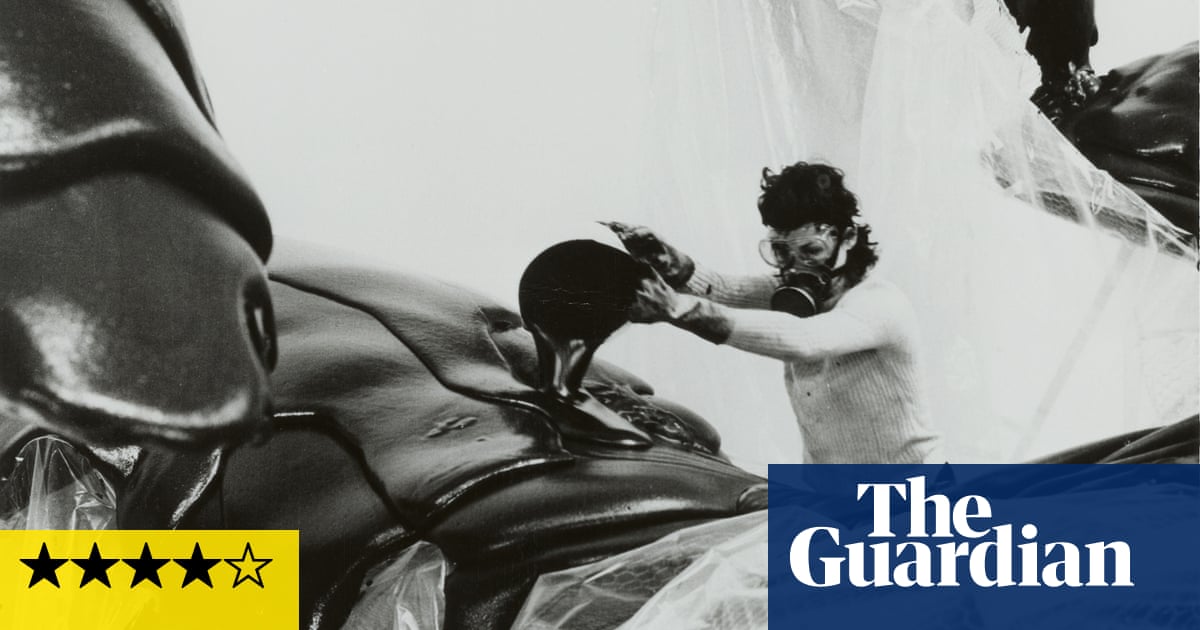
ne summer morning in 2008, Christopher Marinello was waiting on 72nd Street in Manhattan, New York. The traffic was busy, but after a few minutes he saw what he was waiting for: a gold Mercedes with blacked-out windows drew near. As it pulled up to the kerb, a man in the passenger seat held a large bin-liner out of the window. “Here you go,” he said. Marinello took the bag and the car sped off. Inside was a rolled-up painting by the Belgian artist Paul Delvaux, Le Rendez-vous d’Ephèse. Its estimated worth was $6m, and at that point it had been missing for 40 years.
Marinello is one of a handful of people who track down stolen masterpieces for a living. Operating in the grey area between wealthy collectors, private investigators, and high-value thieves, he has spent three decades going after lost works by the likes of Warhol, Picasso and Van Gogh. In that time, he says he has recovered art worth more than half a billion dollars. When I call him, he answers, then abruptly hangs up. “I was just on my way to a police station to recover a stolen sculpture,” he explains later, apologising.
Cases tend to go the following way. A stolen artwork – in this instance, a bird by the Martin Brothers pottery makers, which was swiped from a London library in 2005 – will often turn up at auction or on social media. It then falls to Marinello to establish whether it is actually the missing work and, sometimes, to get it back. This, he says, is usually relatively simple.
Stolen works often change hands several times before resurfacing, leaving subsequent possessors in the dark about their provenance. This is most likely what happened with the Delvaux. The painting, completed in 1967, depicts several nude women in a dreamlike landscape that’s part classical architecture, part mid-century tram station. Delvaux himself sold it a year later, but it was stolen before it reached the buyer. In 2008, Marinello got a call from somebody who wanted to return it. What happened to it in the intervening 40 years is unclear, although its final location is known. It was rolled up, says Marinello, in the wardrobe of “a very well-heeled celebrity. And their very expensive lawyer made it clear they would never be named.”
The pick-up, a meticulously planned operation, was “one of the more unusual ones”. But in Marinello’s line of work, it pays to expect the unexpected. “I get a huge amount of tips, usually on WhatsApp,” he says. “Sometimes they are from informants I work with, but I have to sift through a lot of garbage. I once had a guy tell me the original Mona Lisa in the Louvre was a fake, and that he had the documentation to prove it. That goes in the crazy file.”
A slight, 58-year-old Italian American with a soft Brooklyn accent, Marinello went to art school before realising he “wasn’t very good”. He then trained as a lawyer, cutting his teeth as a litigator in New York representing galleries, collectors and dealers in cases involving disputed works. “Eventually, it developed into a full-time art recovery practice,” he says. In 2013, he formed his own company, Art Recovery International, which is based in Venice but has offices in London.
A former client, quoted on his website, describes him as “a mixture of detective, terrier and pin-sharp lawyer”, but in conversation, Marinello is polite and yielding. It is difficult to imagine him stepping in as an intermediary between the police and owners of stolen art. “I am an attorney, not a badass,” he says. “But I’m a pretty good negotiator. I can convince people to do the right thing.”
One such occasion occurred in 2010, when he was approached by a gallery in Toronto. Somebody had offered them an $80,000 bronze sculpture by Henry Moore that had been stolen nine years earlier. When Marinello contacted the seller, the person revealed himself to be a member of the Italian mafia in Toronto. “He made reference to the fact that I am also an Italian citizen,” says Marinello, “and that I was giving him a hard time. He said they could do the same to me.”
Unfazed, Marinello was able to negotiate the sculpture’s release. “The bottom line,” he says, “is that if you are trying to sell something that is stolen, you’re the one with a problem, not me.” The mobster, he adds, “could have been arrested for trafficking, for possession, or any number of things. He needed me more than I needed him. That was what I had to convince him.”
When pressed on how he did this, Marinello sounds awkward. “I can’t always say what my methods are.” What he will say is that he will never pay a ransom. “Everything I do is legal, ethical and responsible. I’m not going to jeopardise my licence [as a lawyer],” he adds. “If I paid off a thief to get something back, they would only come back for more.”
He adds: “With a lot of art crime, there is nobody to arrest and people rarely go to prison. It’s just a matter of recovering the work.” However, sometimes a suspect will refuse to cooperate. Then, things are different. “We go after them like pitbulls and never let go,” he says. “And that is when they start getting nasty, when they are concerned they’re going to go to prison.” He says he has received direct threats from people he is pursuing, while his elderly relatives have been intimidated.
As a precaution, Marinello has stopped publishing his address. “God forbid your life is in danger and you do have to act quickly,” he says. “There are some very wealthy people in the art world and they will absolutely go after you. And as for the criminals, there are plenty you just do not want to deal with.” He lowers his voice. “They’ll break your legs.”
Despite this, he is keen to dispel any misconceptions that his work is glamorous. “I guess the movies always make it seem that way,” he says. “But there is a lot of insurance paperwork involved. I spend most of my time digging through old records and fighting with people over the phone.”
Moreover, art thieves also usually fail to live up to the hype. When Maurizio Cattelan’s £4.8m golden toilet, called America, went missing from Blenheim Palace, Oxford, in 2019, the artist himself praised the perpetrators as “great performers”. Marinello takes a dimmer view. “They almost certainly did not steal it for its art value. They stole it for its metal value. That leads me to believe it was just common thugs who knew enough about plumbing to remove it.”
He continues: “The dumbest thing I ever did was in Amsterdam. I was meeting a former art thief about a $100m Picasso. He was very active in the 70s in the US, and in prison was partnered with a big-time drug dealer who knew where it was. We were trying to negotiate its return.” The meeting was in 2014, around Thanksgiving. “So like an idiot, I took my family with me, including my mother-in-law, and decided to make a weekend of it.”
Marinello told the ex-con to meet him at the hotel where he was staying with his mother-in-law in the room next door. “The day we were supposed to meet, she came down to breakfast and said, ‘Some guy named Henry called – he wants to see you.’ Turns out this guy had called the hotel and got my mother-in-law’s room number. Oh God, I had my head in my hands. I decided never again to mix business with pleasure.”
As for the Delvaux? Marinello walked it down a crowded 72nd Street to a nearby restoration specialist, rolled up “like a bazooka” in the bin-liner over his shoulder. When he took it out of the bag, the restorer gasped. The painting had been damaged and would eventually fetch just $1m at auction, $5m less than its original estimated worth. “They’d rolled it up the wrong way,” says Marinello. “The paint had all flicked off the nudes. Idiots!”












